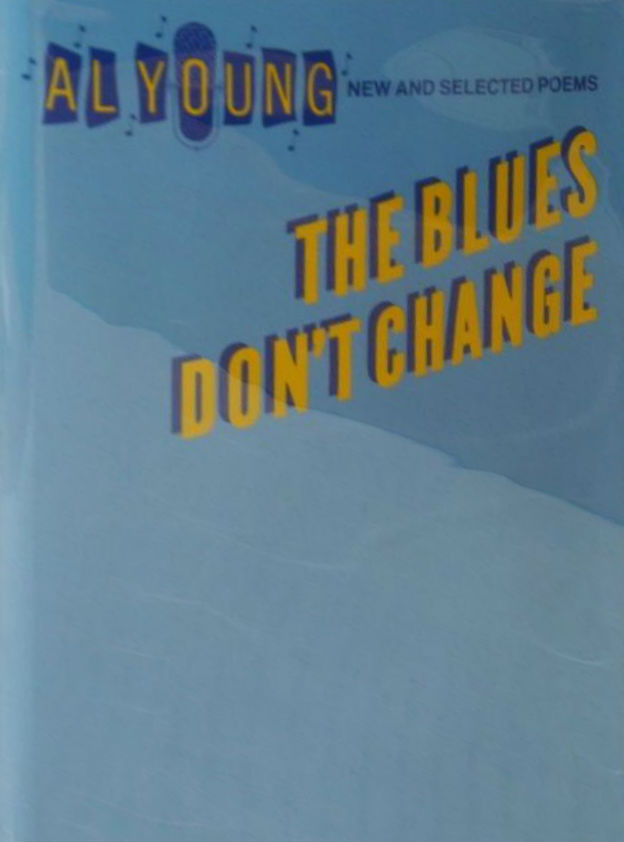31 Books Published by Louisiana State University Press on AALBC — Book Cover Collage
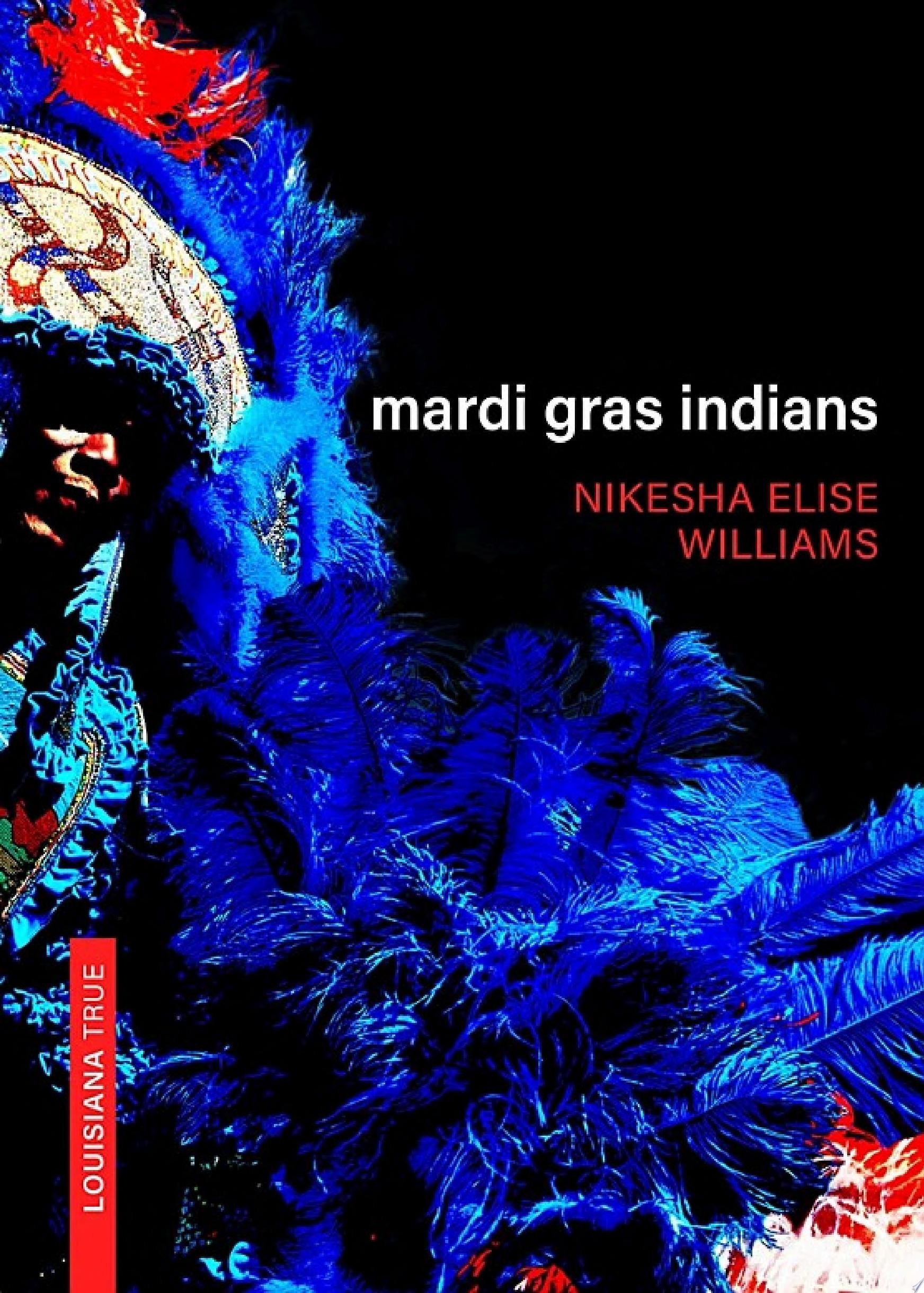 Mardi Gras Indians
Mardi Gras Indians
by Nikesha Elise WilliamsLSU Press (Oct 01, 2022)
Read Detailed Book Description
Mardi Gras Indians explores how sacred and secular expressions of Carnival throughout the African diaspora came together in a gumbo-sized melting pot to birth one of the most unique traditions celebrating African culture, Indigenous peoples, and Black Americans. Williams ties together the fragments of the ancient traditions with the expressed experiences of the contemporary.
From the sangamentos of the Kongolese and the calumets of the various tribes of the lower Mississippi River valley to one-on-one interviews with today’s Black masking tribe members, this book highlights the spirit of resistance and rebellion upon which this culture was built.
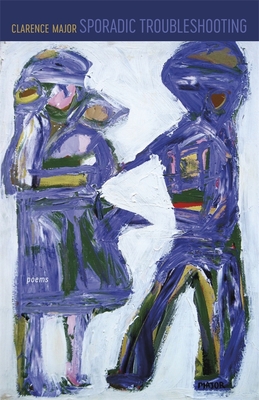 Sporadic Troubleshooting: Poems
Sporadic Troubleshooting: Poems
by Clarence MajorLSU Press (Apr 06, 2022)
Read Detailed Book Description
Deeply felt and brimming with humor and philosophical inquiry, Sporadic Troubleshooting, the latest volume from Clarence Major, both acknowledges poetic literary tradition and explores exciting new territories in language. Throughout, Major uses an improvisational technique, applying it to well-known mythological stories to enhance narrative and lyrical intensity. Breathtakingly vivid, these poems are testaments to universal subjects such as love, charity, nature, fear, survival, loyalty, justice, and beauty. Major’s poems offer vigorous inquiries into life and art with a view toward renewal and transformation.
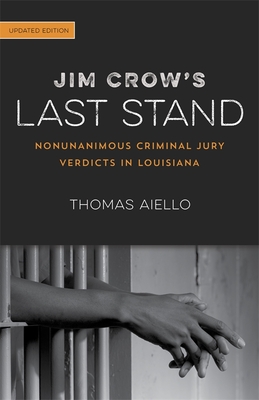 Jim Crow’s Last Stand (Paperback): Nonunanimous Criminal Jury Verdicts in Louisiana
Jim Crow’s Last Stand (Paperback): Nonunanimous Criminal Jury Verdicts in Louisiana
by Thomas AielloLSU Press (Sep 02, 2019)
Read Detailed Book Description
A remnant of the racist post-Reconstruction Redeemer sociopolitical agenda, Louisiana’s nonunanimous jury-verdict law permitted juries to convict criminal defendants with only nine, and later ten, out of twelve votes: a legal oddity. On the surface, it was meant to speed convictions. In practice, the law funneled many convicts—especially African Americans—into Louisiana’s burgeoning convict lease system. Although it faced multiple legal challenges through the years, the law endured well after convict leasing had ended. Few were aware of its existence, let alone its original purpose. In fact, the original publication of Jim Crow’s Last Stand was one of the first attempts to call attention to the historical injustice caused by this law.
This updated edition of Jim Crow’s Last Stand unpacks the origins of the statute in Bourbon Louisiana, traces its survival through the civil rights era, and ends with the successful effort to overturn the nonunanimous jury practice, a policy that officially went into effect on January 1, 2019.
 My Studio: Poems
My Studio: Poems
by Clarence MajorLSU Press (Oct 09, 2018)
Read Detailed Book Description
Renowned poet and painter Clarence Major examines the world through the lens of his art studio in this new collection of poems. Both humorous and serious, deeply felt and spontaneous, the collection begins and ends in his studio, with the poems in between exploring how art can shape one’s perception of the physical world and more imagined considerations of Emily Dickinson, opera, beauty, romance, and the natural world, “where all the parts coalesce / into a cohesive whole.”
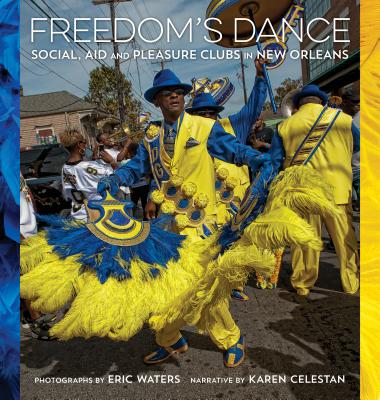 Freedom’s Dance: Social Aid and Pleasure Clubs in New Orleans
Freedom’s Dance: Social Aid and Pleasure Clubs in New Orleans
by Karen CelestanLSU Press (Feb 26, 2018)
Read Detailed Book Description
Freedom’s Dance provides a photographic and textual overview of the social, aid and pleasure club (SAPC) parade culture in New Orleans, tracking its origins in African traditions and subsequent development in Black New Orleans culture. Containing over 175 photographs by Eric Waters, Freedom’s Dance offers the first complete look at the SAPC Second Line tradition, ranging from ideological approaches to the contributions of musicians, development of specific rituals by various clubs, and parade accessories such as elaborately decorated fans and sashes. Karen Celestan’s vibrant text is supplemented with interviews by Valentine Pierce and other longtime culture-bearers such as Oliver “Squirk” Hunter, Lois Andrews (mother of Troy “Trombone Shorty” Andrews and James Andrews), Fred Johnson, Gregory Davis, and Lionel Batiste, while interdisciplinary essays by leading scholars detail the rituals, historic perspective, and purpose of the Second Line. Freedom’s Dance defines this unique public-private culture and captures every aspect of the Second Line, from SAPC members’ rollicking introductions at their annual parade to a funeral procession on its way to the crypt.
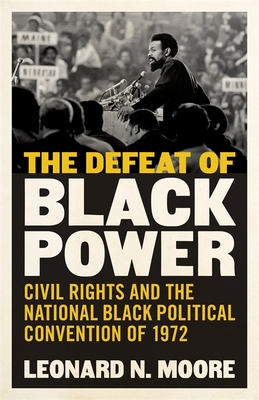 The Defeat of Black Power: Civil Rights and the National Black Political Convention of 1972
The Defeat of Black Power: Civil Rights and the National Black Political Convention of 1972
by Leonard N. MooreLSU Press (Feb 15, 2018)
Read Detailed Book Description
For three days in 1972 in Gary, Indiana, eight thousand American civil rights activists and Black Power leaders gathered at the National Black Political Convention, hoping to end a years-long feud that divided black America into two distinct camps: integrationists and separatists. While some form of this rift existed within black politics long before the 1968 assassination of Dr. Martin Luther King, Jr., his death—and the power vacuum it created—heightened tensions between the two groups, and convention leaders sought to merge these competing ideologies into a national, unified call to action. What followed, however, effectively crippled the Black Power movement and fundamentally altered the political strategy of civil rights proponents. An intense and revealing history, Leonard N. Moore’s The Defeat of Black Power provides the first in-depth evaluation of this critical moment in American history.
During the brief but highly charged meeting in March 1972, attendees confronted central questions surrounding black people’s involvement in the established political system: reject or accept integration and assimilation; determine the importance or futility of working within the broader white system; and assess the perceived benefits of running for public office. These issues illuminated key differences between integrationists and separatists, yet both sides understood the need to mobilize under a unified platform of black self-determination. At the end of the convention, determined to reach a consensus, officials produced "The National Black Political Agenda," which addressed the black constituency’s priorities. While attendees and delegates agreed with nearly every provision, integrationists maintained their rejection of certain planks, namely the call for a U.S. constitutional convention and separatists’ demands for reparations. As a result, black activists and legislators withdrew their support less than ten weeks after the convention, dashing the promise of the 1972 assembly and undermining the prerogatives of black nationalists.
In The Defeat of Black Power, Moore shows how the convention signaled a turning point for the Black Power movement, whose leaders did not hold elective office and were now effectively barred access to the levers of social and political power. Thereafter, their influence within black communities rapidly declined, leaving civil rights activists and elected officials holding the mantle of black political leadership in 1972 and beyond.
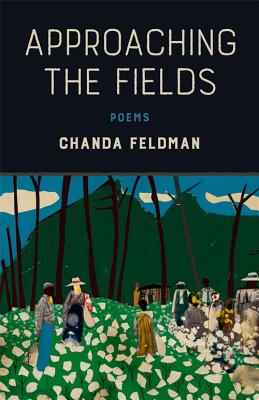 Approaching the Fields: Poems
Approaching the Fields: Poems
by Chanda FeldmanLSU Press (Feb 05, 2018)
Read Detailed Book Description
In a cadence reminiscent of old gospel rhythms rising from deeper reflections on the evolution of self and culture, the poet evokes her memories of family and history, sans sentimentalism. With heartfelt precision, Feldman builds the book to its shining summit, a testimony to getting through to an understanding of what it is to stand in awe of an awareness of how love persists. Approaching the Fields is a beautifully crafted book of courage gone, courage now taking breath, and courage yet to come.—Afaa M. Weaver
 All Souls: Essential Poems
All Souls: Essential Poems
by Brenda Marie OsbeyLSU Press (Nov 04, 2015)
Read Detailed Book Description
All Souls: Essential Poems brings together work that reflects the interweaving of history, memory, and the indelible bonds between living and dead that has marked the output of Louisiana Poet Laureate Emerita Brenda Marie Osbey. Comprising poems written and published over the span of four decades, this thematic collection highlights the unity of Osbey’s voice and narrative intent.
The six sections of the book reveal the breadth of her poetic vision. The first, “House in the Faubourg,” contains poems focused on the people and places of Osbey’s native New Orleans, and the penultimate section, “Unfinished Coffees,” examines the Crescent City within a broader, more contemporary meditation on culture. “Something about Trains” features two suites of poems that use trains and railway stations as settings from which to inspect desolation, writing, and memory; and “Little History, Part One” recounts tales of European settlement and exploitation of the New World. The poems in “What Hunger” look at the many facets of desire, while “Mourning Like a Skin” includes elegies and poems addressing the lasting presence of the dead.
Dynamic and unflinching, the poems in All Souls speak of a world with many secrets, known “only through having learned them / the hardest way.”
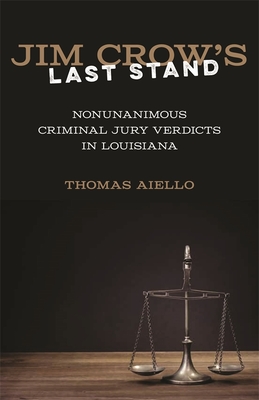 Jim Crow’s Last Stand: Nonunanimous Criminal Jury Verdicts in Louisiana
Jim Crow’s Last Stand: Nonunanimous Criminal Jury Verdicts in Louisiana
by Thomas AielloLSU Press (May 04, 2015)
Read Detailed Book Description
The last remnant of the racist Redeemer agenda in the Louisiana’s legal system, the nonunanimous jury-verdict law permits juries to convict criminal defendants with only ten out of twelve votes. A legal oddity among southern states, the ordinance has survived multiple challenges since its ratification in 1880. Despite the law’s long history, few are aware of its existence, its original purpose, or its modern consequences. At a time when Louisiana’s penal system has fallen under national scrutiny, Jim Crow’s Last Stand presents a timely, penetrating, and concise look at the history of this law’s origins and its troubling legacy.
The nonunanimous jury-verdict law originally allowed a guilty verdict with only nine juror votes, funneling many of those convicted into the state’s burgeoning convict lease system. Yet the law remained on the books well after convict leasing ended. Historian Thomas Aiello describes the origins of the statute in Bourbon Louisiana-a period when white Democrats sought to redeem their state after Reconstruction-its survival through the civil rights era of the 1950s and 1960s, and the Supreme Court’s decision in Johnson v. Louisiana (1972), which narrowly validated the state’s criminal conviction policy.
Spanning over a hundred years of Louisiana law and history, Jim Crow’s Last Stand investigates the ways in which legal policies and patterns of incarceration contribute to a new form of racial inequality.
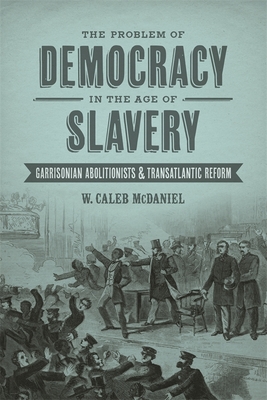 The Problem of Democracy in the Age of Slavery: Garrisonian Abolitionists & Transatlantic Reform
The Problem of Democracy in the Age of Slavery: Garrisonian Abolitionists & Transatlantic Reform
by W. Caleb McDanielLSU Press (May 06, 2013)
Read Detailed Book Description
Winner of the Merle Curti Award
Winner of the SHEAR James Broussard First Book Prize
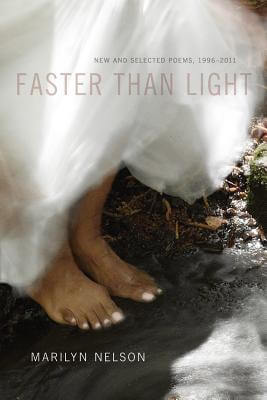 Faster Than Light: New And Selected Poems, 1996-2011
Faster Than Light: New And Selected Poems, 1996-2011
by Marilyn NelsonLSU Press (Nov 12, 2012)
Read Detailed Book Description
Conjuring numerous voices and characters across oceans and centuries, Faster Than Light explores widely disparate experiences through the lens of traditional poetic forms. This volume contains a selection of Marilyn Nelson’s new and uncollected poems as well as work from each of her lyric histories of eighteenth-, nineteenth-, and twentieth-century African American individuals and communities.Poems include the stories of historical figures like Emmett Till, the fourteen-year-old boy lynched in 1955, and the inhabitants of Seneca Village, an African American community razed in 1857 for the creation of Central Park. "Bivouac in a Storm" tells the story of a group of young soldiers, later known as the Tuskegee Airmen, as they trained near Biloxi, Mississippi, "marching in summer heat / thick as blackstrap molasses, under trees / haunted by whippings." Later pieces range from the poet’s travels in Africa, Europe, and Polynesia, to poems written in collaboration with Father Jacques de Foiard Brown, a former Benedictine monk and the subject of Nelson’s playful fictional fantasy sequence, "Adventure-Monk!" Both personal and historical, these poems remain grounded in everyday details but reach toward spiritual and moral truths.
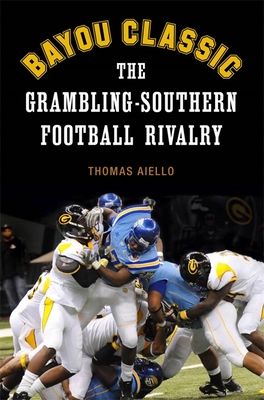 Bayou Classic: The Grambling-Southern Football Rivalry
Bayou Classic: The Grambling-Southern Football Rivalry
by Thomas AielloLSU Press (Sep 15, 2010)
Read Detailed Book Description
The annual clash in New Orleans between the Grambling State University Tigers and the Southern University Jaguars represents the fiercest and most anticipated in-state football rivalry in Louisiana. The most significant national game to feature historically black colleges and universities is more than a contest; the Bayou Classic is a lavish event, featuring celebrities, a fan festival, and a halftime Battle of the Bands that offers an intensity equal to that of the gridiron. In Bayou Classic, Thomas Aiello chronicles the history of the game and explores the two schools’ broader significance to Louisiana, to sports, and to the black community.
When the Southern University Bushmen football team traveled to Monroe, Louisiana, to play the Tigers of Louisiana Negro Normal and Industrial Institute for the first time on Armistice Day, 1932, few realized they were witnessing the birth of a phenomenon. Aiello recounts Southern’s early dominance over the smaller, two-year institution; Southern’s acceptance into the Southwestern Athletic Conference; Grambling’s hiring of the legendary Eddie Robinson, who would lead the Tigers to 408 wins between 1941 and 1997; Grambling’s first victory over Southern; and years of alternating home and away games. In 1974, the rivalry found a neutral site in New Orleans — first at Tulane Stadium and then the Superdome — and became the Bayou Classic. An NBC television contract introduced the Bayou Classic to a nationwide audience and completed the transformation of the game into a major event. The Bayou Classic remains the only nationally broadcast game between two historically black schools. Aiello supplements his colorful narrative with period photographs and informative appendices providing game results, statistics, and all-star teams from every year the schools have played.
To appreciate the rivalry, Coach Eddie Robinson once noted, you have to realize Grambling and Southern fans are close friends, as well as relatives. Bayou Classic offers a splendid history for fans, friends, and those who want to know more about this special game.
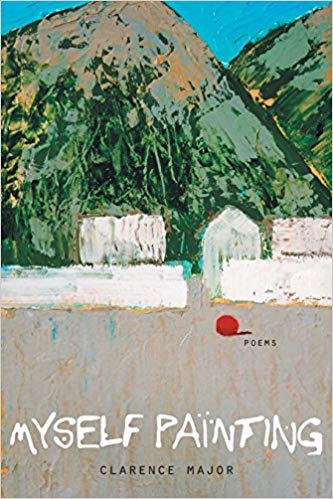 Myself Painting: Poems
Myself Painting: Poems
by Clarence MajorLSU Press (Oct 01, 2008)
Read Detailed Book Description
In Myself Painting Clarence Major seeks to recreate for readers the inexpressible feeling that comes from creating art with poems that speak not of painting itself, but of its underlying process. Major incorporates the techniques of paintingparticularly that of Post-Expressionisminto his verse, describing scenery with an artist’s eye and using form and color to evokes striking images.
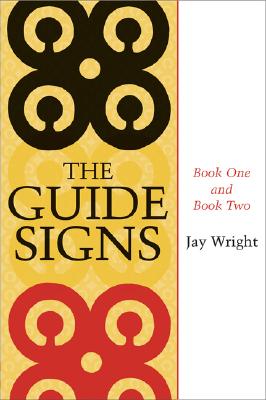 The Guide Signs: Book One and Book Two
The Guide Signs: Book One and Book Two
by Jay WrightLSU Press (Oct 01, 2007)
Read Detailed Book Description
In The Guide Signs, acclaimed poet Jay Wright closes a movement he opened with his first book, The Homecoming Singer, in 1971, a movement that takes its design from the ancient people of Mali. Wright continued this theme in subsequent works, all gathered in Transfigurations: Collected Poems, whose eight books represent the eight master signs. The two books of The Guide Signs represent the primordial Nommo twins. All together, these ten books, as the ten earlier signs taken from the complete signs of the world, provide the base for the soul and life force given to everything. Wright encourages the reader to participate in weaving the fragile and fragmentary fabric of experience, and to do what Horace Silver encourages his listeners to do?get down in the music with us.
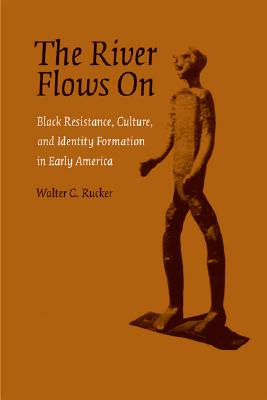 The River Flows On: Black Resistance, Culture, and Identity Formation in Early America
The River Flows On: Black Resistance, Culture, and Identity Formation in Early America
by Walter C. RuckerLSU Press (Jan 01, 2006)
Read Detailed Book Description
The River Flows On is an impressively broad study of slave resistance in America, spanning the colonial and antebellum eras in both the North and South and covering all forms of recalcitrance, from major revolts and rebellions to everyday acts of disobedience. Walter C. Rucker analyzes American slave resistance with a keen understanding of its African influences while he also traces the emergence of an "African American" identity, orientation, consciousness, and culture. Rucker identifies African ethnic enclaves throughout the original thirteen colonies that produced unique modes of resistance, but he also points to the shared cultural heritage that facilitated collective action among both African- and American-born slaves. The ubiquitous belief in conjure and spiritual forces, the importance of martial dance and the drum, and ideas about the afterlife and transmigration all served as cultural bridges and fostered a sense of solidarity among slaves. Focusing on the role of African cultural and sociopolitical forces, Rucker gives in-depth attention to the 1712 New York City revolt, the 1739 Stono rebellion in South Carolina, the 1741 New York conspiracy, Gabriel Prosser’s 1800 Richmond slave plot, and Denmark Vesey’s 1822 Charleston scheme. He concludes with Nat Turner’s 1831 revolt in Southampton, Virginia, which bore the marks of both conjure and Christianity, reflecting a new, African American consciousness.
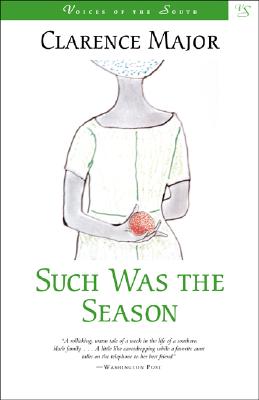 Such Was the Season (Voices of the South)
Such Was the Season (Voices of the South)
by Clarence MajorLSU Press (Apr 01, 2003)
Read Detailed Book Description
Such Was the Season is the story of an eventful week in the life of an elderly matriarch of a large black family in Atlanta. Annie Eliza narrates the story of "a killer diller" week, with the homecoming of her nephew, Adam "Juneboy" North, a doctor at Yale who has been gone for more than twenty-five years. Following her nephew’s arrival Annie Eliza’s daughter-in-law declares her intention to run for a seat in the state senate, which is soon disrupted by the threat of scandal involving someone close to her.
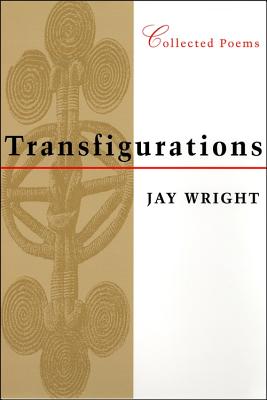 Transfigurations: Collected Poems
Transfigurations: Collected Poems
by Jay WrightLSU Press (Nov 01, 2000)
Read Detailed Book Description
Poet and playwright Jay Wright has received numerous awards, including the Bollingen Prize for Poetry, the Anisfield-Wolf Award for Lifetime Achievement, the L. L. Winship/PEN Award, the Lannan Literary Award for Poetry, a Guggenheim Fellowship, and the 62nd Fellowship of the Academy of American Poets. A MacArthur Fellow and a member of the American Academy of Arts and Sciences, Wright lives in Vermont.
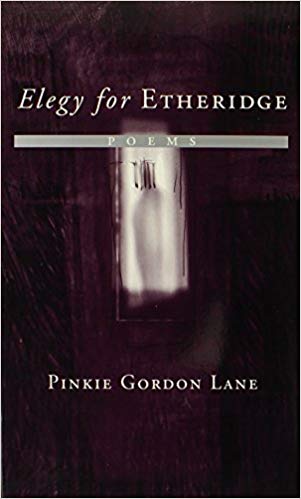 Elegy for Etheridge: Poems
Elegy for Etheridge: Poems
by Pinkie Gordon LaneLSU Press (Apr 01, 2000)
Read Detailed Book Description
For this collection of poems, the author quietly observes the panorama of life that surrounds us all, writing of family and friends, trees and owls, the exploitation of women on welfare, and the devestation of the natural environment.
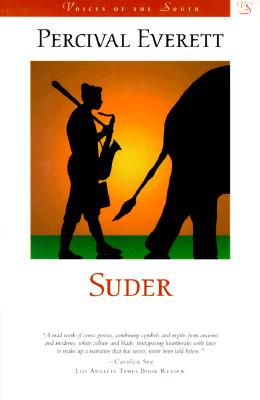 Suder (Voices of the South)
Suder (Voices of the South)
by Percival EverettLSU Press (Apr 01, 1999)
Read Detailed Book Description
Craig Suder, third baseman for the Seattle Mariners, is in a terrible slump. He’s batting below .200 at the plate, and even worse in bed with his wife; and he secretly fears he’s inherited his mother’s insanity. Ordered to take a midseason rest, Suder instead takes his record of Charlie Parker’s "Ornithology," his record player, and his new saxophone and flees, negotiating his way through madcap adventures and flashbacks to childhood ("If you folks believed more strongly in God, maybe you wouldn’t be colored"). Pursued by a raging dope dealer, saddled with a mishandled elephant and an abused little white girl, he manages in the end to fly free, both transcending and inspired by the pull of so much life.
 All Saints: New and Selected Poems
All Saints: New and Selected Poems
by Brenda Marie OsbeyLSU Press (Nov 01, 1997)
Read Detailed Book Description
Like the feast day recalled in its title, this collection of twenty narrative poems venerates the dead. Brenda Marie Osbey invokes, impersonates, and converses with her Afro-New Orleans forebears—both blood ancestors and spiritual predecessors—weaving in hypnotic cadence a spell as potent as the religious and magical mysteries of her native culture. In All Saints we come to believe the dead do live, in the slave bricks paving the city’s faubourgs, in the Hoodoo rites and images of saints, and especially in ourselves, who “walk upon the earth a living man / wearing all the shrouds of mourning like a skin / and memory like a stone inside your organs.”
Assisted by a glossary of New Orleans ethnic expressions, place names, and characters, we discern in these poems a multitude of voices that speak to us from colonial times forward. We hear Juan San Malo, leader of a slave rebellion; Luis Congo, a free Kongo man; myriad brothers and sisters, both distinct and collective; and the city itself, “thrumming / eternal / ever / at the tracks.” Chanting, lamenting, outpouring, healing—Osbey’s poems measure her own musical refrain to the past while keeping time with the present: “we cry out together / in time to hear their cries.”
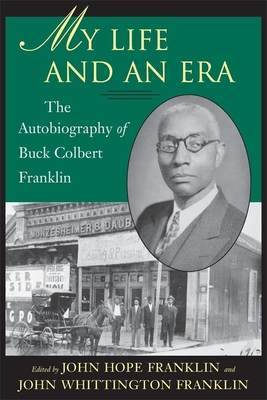 My Life and an Era: The Autobiography of Buck Colbert Franklin
My Life and an Era: The Autobiography of Buck Colbert Franklin
by John Hope FranklinLSU Press (Oct 01, 1997)
Read Detailed Book Description
“My father’s life represented many layers of the human experience—freedman and Native American, farmer and rancher, rural educator and urban professional."—John Hope Franklin
Buck Colbert “B.C.” Franklin (1879-1960) led an extraordinary life; from his youth in what was then the Indian Territory to his practice of law in twentieth-century Tulsa, he was an observant witness to the changes in politics, law, daily existence, and race relations that transformed the wide-open Southwest. Fascinating in its depiction of an intelligent young man’s coming of age in the days of the Land Rush and the closing of the frontier, My Life and an Era is equally important for its reporting of the triracial culture of early Oklahoma.
Recalling his boyhood spent in the Chickasaw Nation, Franklin suggests that blacks fared better in Oklahoma in the days of the Indians than they did later with the white population. In addition to his insights about the social milieu, he offers youthful reminiscences of mustangs and mountain lions, of farming and ranch life, that might appear in a Western novel. After returning from college in Nashville and Atlanta, Franklin married a college classmate, studied law by mail, passed the bar, and struggled to build a practice in Springer and Ardmore in the first years of Oklahoma statehood. Eventually a successful attorney in Tulsa, he was an eyewitness to a number of important events in the Southwest, including the Tulsa race riot of 1921, which left more than 100 dead. His account clearly shows the growing racial tensions as more and more people moved into the state in the period leading up to World War II. Rounded out by an older man’s reflections on race, religion, culture, and law, My Life and an Era presents a true, firsthand account of a unique yet defining place and time in the nation’s history, as told by an eloquent and impassioned writer. The Fields of Praise: New and Selected Poems
The Fields of Praise: New and Selected Poems
by Marilyn NelsonLSU Press (May 01, 1997)
Read Detailed Book Description
In The Fields of Praise, Marilyn Nelson claims as subjects the life of the spirit, the vicissitudes of love, and the African American experience and arranges them as white pebbles marking our common journey toward a "monstrous love / that wants to make the world right." Nelson is a poet of stunning power, able to bring alive the most rarified and subtle of experiences. A slave destined to become a minister preaches sermons of heartrending eloquence and wisdom to a mule. An old woman scrubbing over a washtub receives a personal revelation of what Emancipation means: "So this is freedom: the peace of hours like these." Memories of the heroism of the Tuskegee Airmen in the face of aerial combat abroad and virulent racism at home bring a speaker to the sudden awareness of herself as the daughter "of a thousand proud fathers."
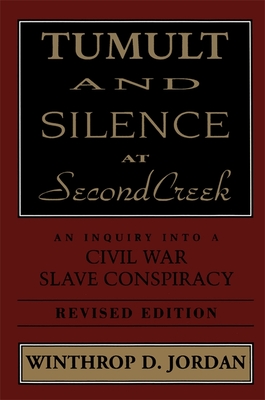 Tumult and Silence at Second Creek: An Inquiry Into a Civil War Slave Conspiracy
Tumult and Silence at Second Creek: An Inquiry Into a Civil War Slave Conspiracy
by Winthrop D. JordanLSU Press (Jan 01, 1996)
Read Detailed Book Description
In the tension-filled months of spring and summer 1861, a faction of enslaved individuals in Adams County, Mississippi, plotted to overthrow their white owners and secure their own freedom. However, the scheme was uncovered, leading to the arrest and subsequent trial of the conspirators. A minimum of forty slaves in the vicinity of Natchez were executed. By November of that year, the episode was largely swept under the rug, as local plantation owners conspired to erase the event from public memory.
In 1971, historian Winthrop D. Jordan discovered a crucial, yet overlooked, document that contained the interrogations of some of the accused slaves. This led him on a two-decade-long quest to piece together the untold story. The absence of any official reports or newspaper coverage on the conspiracy turned Jordan’s research into a true detective story. He dug through a myriad of sources: private correspondences, diaries, Confederate soldier letters, Union officer journals, postwar Southern Claims Commission records, census data, plantation documents, and even tombstones.
The result of this extensive investigation is a masterfully written account of one of the last known slave rebellions in the United States. Beyond the details of the conspiracy, the book also paints a vivid picture of the Natchez region at the onset of the Civil War. At that time, Adams County was among the nation’s most affluent areas, dominated by a small elite who held significant sway over not just the enslaved population, but also the less affluent white community.
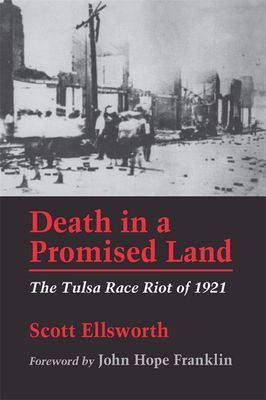 Death in a Promised Land: The Tulsa Race Riot of 1921
Death in a Promised Land: The Tulsa Race Riot of 1921
by Scott EllsworthLSU Press (Jan 01, 1992)
Read Detailed Book Description
Widely believed to be the most extreme incidence of white racial violence against African Americans in modern United States history, the 1921 Tulsa Race Massacre resulted in the destruction of over one thousand black-owned businesses and homes as well as the murder of between fifty and three hundred black residents.
Exhaustively researched and critically acclaimed, Scott Ellsworth’s Death in a Promised Land is the definitive account of the Tulsa race riot and its aftermath, in which much of the history of the destruction and violence was covered up. It is the compelling story of racial ideologies, southwestern politics, and incendiary journalism, and of an embattled black community’s struggle to hold onto its land and freedom. More than just the chronicle of one of the nation’s most devastating racial pogroms, this critically acclaimed study of American race relations is, above all, a gripping story of terror and lawlessness, and of courage, heroism, and human perseverance.—Journal of Southern History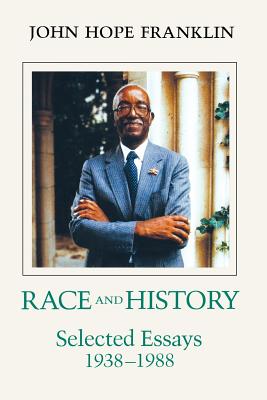 Race and History: Selected Essays, 1938—1988 (Revised)
Race and History: Selected Essays, 1938—1988 (Revised)
by John Hope FranklinLSU Press (Dec 01, 1991)
Read Detailed Book Description
In Race and History, John Hope Franklin, one of the nation’s foremost historians, collects twenty-seven of his most influential shorter writings. The essays are presented thematically and include pieces on southern history; significant but neglected historical figures; historiography; the connection between historical problems and contemporary issues; and the public role of the historian.
Collectively these essays reveal Franklin as a man who has exhibited immense courage and intellectual independence in the face of cultural and social bias, a scholar who has set the tone and direction for twentieth-century African-American studies, and a writer whose insistence on balance and truth has inspired two generations of historians.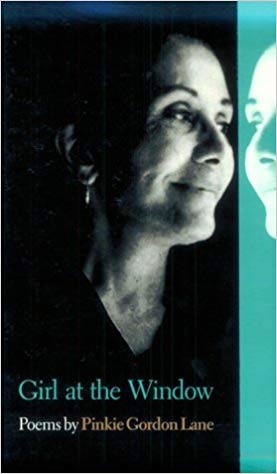 Girl at the Window: Poems
Girl at the Window: Poems
by Pinkie Gordon LaneLSU Press (Nov 01, 1991)
Read Detailed Book Description
Book by Lane, Pinkie Gordon
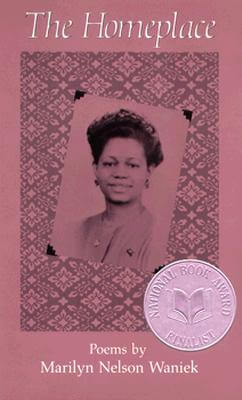 The Homeplace: Poems
The Homeplace: Poems
by Marilyn NelsonLSU Press (Nov 01, 1990)
Read Detailed Book Description
A fine softcover copy. Inscribed by the poet. Tight binding. Clean, unmarked pages. Not ex-library. Shipped Weight: Under 1 kilogram. Category: Poetry; Signed by Author. ’ 0807116416. ISBN/EAN: 9780807116418. Inventory No: 012322.
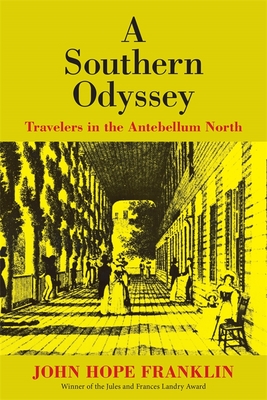 A Southern Odyssey: Travelers in the Antebellum North (Revised)
A Southern Odyssey: Travelers in the Antebellum North (Revised)
by John Hope FranklinLSU Press (Aug 01, 1979)
Read Detailed Book Description
Frederick Law Olmsted, the northerner who wrote comprehensively about his travels in the South, had no southern counterpart. But there were thousands of southerners — planters, merchants, bankers, students, housewives, writers, and politicians — who traveled extensively in the North and who recorded their impressions in letters to their families, in articles for the local press, and in the few books they wrote.
In A Southern Odyssey the distinguished historian John Hope Franklin canvasses the entire field of southern travel and analyzes the travelers and their accounts of what they saw in the North. Many went out of sheer curiosity. Others went on business, to get an education, to make purchases for the store and home, to attend religious or political conventions, or to instruct northerners about the superior qualities of the southern way of life and warn them of the dangers of unbridled abolitionist attacks.
The more they went, the more they doubted the wisdom of spending money among their enemies. But they continued to go, even against their own advice to fellow southerners, and some tarried until the attack on Fort Sumter.
Concentrating as it does on the human side of North-South relations during the antebellum years, A Southern Odyssey represents a fresh and imaginative approach to a long overlooked chapter in southern history. It is also a handsome book, with twenty illustrations that comprise An Album of Southern Travel.
 Time’s Unfading Garden: Anne Spencer’s Life and Poetry
Time’s Unfading Garden: Anne Spencer’s Life and Poetry
by Anne SpencerLSU Press (Jan 01, 1977)
Read Detailed Book Description
Time’s Unfading Garden: Anne Spencer’s Life and Poetry is a comprehensive exploration of the life and work of Anne Spencer, an African-American poet and prominent figure of the Harlem Renaissance. The book delves into her poetry, which often addressed themes of race, nature, and identity, and highlights her role as an intellectual and civil rights activist. Through both biographical context and literary analysis, the book presents Spencer’s personal life and her garden—often seen as a metaphor for her creative world—as central elements in understanding her poetry. The work brings attention to her contributions to American literature, particularly in giving voice to the Black experience in early 20th-century poetry.
 The Suppression of the African Slave Trade, 1638-1870 (Revised)
The Suppression of the African Slave Trade, 1638-1870 (Revised)
by W.E.B. Du BoisLSU Press (Jan 01, 1970)
Read Detailed Book Description
First published in 1896, The Suppression of the African Slave Trade remains the standard work on the efforts made in the United States, from 1638 to 1870, to limit and suppress the trade in slaves between Africa and America. In the foreword to this new edition, John Hope Franklin, James B. Duke Professor of History Emeritus, and professor of legal history at Duke University, explains the attitude toward slavery at the time Du Bois wrote his book, gives a brief background of Du Bois’s growth as an educator and writer, and examines the methods Du Bois used to write the book. Those doing work on th subject of American slavery will find this volume an important source book.

